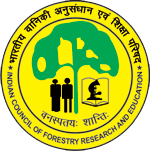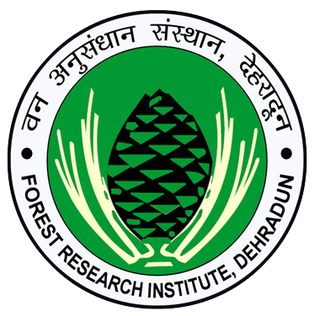National Forest Insect Collection (NFIC) at Forest Research Institute, Dehradun is a unique and largest collection of forest insect specimens of Indian sub-continent. The collection has pride of holding about 3,00,000 pinned specimens (20,126 authentically identified species represented under 23 orders, 121 super-families, 281 families and 5589 genera).The oldest specimen in the collection dates back to the year 1858 i.e., Hospitalitermes monoceros (Isoptera: Termitidae). The insect specimens of NFIC preserved in 3140 showcases stored in 157 wooden cabinets holding reference and type materials, and about 1500 boxes with duplicate collections. There are also about 5,000 slides in the collection. Many insects have been obtained in exchange with other institutions in India and abroad. The collection mainly comprises of forest insects of injurious nature. Researchers from India and abroad regularly visit NFIC to study and refer insect specimens. Insects being the most diverse group of organisms pose a challenge before the stakeholders for their correct taxonomic identification and an authenticated insect collection thus is the most important reference point for such studies.
History
During the time when foundation of forest entomology was in making it was very difficult to identify the insects collected in general surveys and in special investigations. At that time in India almost zero facility was available on insect identification. This great impediment in forest entomology research was removed by none other than A. D. Imms, who was appointed as Systematic Entomologist in 1911. Prof. Imms in this direction focused on two fundamental requirements at that time – an authoritatively identified reference insect collection and second a good library. This collection was built up during the first half of the twentieth century through contributions made by staff of the division and forest officers of British India posted in various states of the country. Many insects have also been obtained in exchange with other institution in India and abroad. As in the country there were very few taxonomists, therefore, insects were regularly sent to specialists world over; few name of famous taxonomists who identified our material were Arrow, Baranov, Blair, Breuning, Chopard, Collenette, Corporaal, Cushman, Ferriere, Fleutiaus, Frazer, Grouvelle, Horn, Jordon, Kleine, Lesne, Marshall, Meyrick, Obenberger, Prout, Snyder, Thery, Urarov, Waterston, etc. Later on, after independence, Dr. Gupta and co-workers (Delhi Univ.), Dr. M.S. Mani (St. John’s College, Agra), Pajni, Rose, Saini and Wallia (from Punjabi University, Patiala), Dr. T. Ananthakrishanan (ZSI), etc. in India and various other international taxonomists like Wood, etc. studied and identified the collection. By 1920, knowing the pace with which the collection is building up, it was realized that whole time attention of a competent taxonomist will be required to scientifically maintain the collection. There was quite a fast pace of adding insect species to the collection during the pre independence period, but the trend had a great fall in post independence era.
Significance of NFIC database
NFIC is the first forest insect collection in the country that has been completely digitized on international standards with taxonomic details, multidimensional good quality pictures and their passport data. This precious collection forms a baseline data and regularly referred for different scientific studies such as taxonomic identification, diversity assessment and also insect distributional changes in wake of climate change. The animal diversity is declining worldwide. Some of the older preserved insect specimensare now not available at their earlier habitat or has become rare. This data base will facilitate the identification and referencing of insect species to the researchers and other stake holders with remote access. The digitized specimens would also be helpful in keeping pace and rechecking the changes in determining taxonomic identity on account of continuous scientific advancements. The collection is also useful in prioritizing insect diversity conservation and insect-pest management by comparing their historic insect records. The historic record of invasive insect-pest species can be traced back and their location-wise prevalent natural insect enemies in the record would be helpful in strategizing biocontrol. The insect collection is an important resource for training and educating young insect taxonomists, researchers and students.


